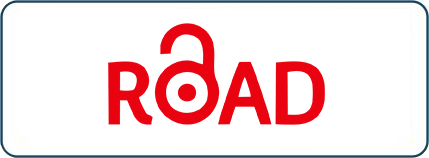Do the Islamic Banks Play a Role in the Monetary Policy Transmission in Pakistan? A Comparative Analysis with Conventional Banks Using Panel Data Analysis
DOI:
https://doi.org/10.33102/jmifr.v19i2.458Keywords:
Monetary policy transmission, Islamic banks, bank lending channelAbstract
In Pakistan, bank lending plays a critical role in economic activities due to the scarcity of stocks and bond options. Islamic banks face an extra layer of difficulty with limited open market instruments and lender of last resort facilities, as well as tough competition with conventional banks. This study analyzes the differences in bank lending by Islamic and conventional banks in transmitting monetary policy by modeling bank credit as a dependent variable while bank-specific assets, liquidity, capital and growth, inflation, and policy rates as explanatory variables. Polled OLS fixed effect panel data models are used to analyze annual data for 2009-2018. The study finds that Islamic bank credit is influenced significantly by policy rates, inflation, and growth, as well as capital and liquidity. Conventional bank credit is significantly affected by the policy rates, growth, and inflation but capital and liquidity are less correlated. This paper concluded that Islamic banks are significant in policy transmission. However, policy tools and differences in operations and contracts affect Islamic bank equity and liquidity which may suffer long-term economic participation.
Downloads
References
Agha, A. I., Mubarik, N., Ahmed, Y. A., Hastam, S. (2005). Transmission mechanism of monetary policy in Pakistan. SBP-Research Bulletin, 1(1), 1-23.
Ahmed, J. (2016). Credit conditions in Pakistan: Supply constraints or demand deficiencies? The Developing Economies, 54(2), 139–161. doi:10.1111/deve.12106
Akhatova, M., Zainal, M. P., & Ibrahim, M. H. (2016). Banking models and monetary transmission mechanisms in Malaysia: Are Islamic banks different? Journal of Applied Economics and Policy, 35(2), 169-183. DOI: 10.1111/1759-3441.12131
Amiti, M. & McGuire, P., & Weinstein, D. (2017). Supply and demand-side factors in global banking. FRB of NY Staff Report No. 818. https://ssrn.com/abstract=2990312
Anwar, S., & Nguyend, L. P. (2018). Channels of monetary policy transmission in Vietnam. Journal of Policy Modelling, 40(4), 709-729. DOI: 10.1016/j.jpolmod.2018.02.004
Asbeig, H. I., & Kassim, S. H. (2014). Monetary policy transmission through the bank-financing channel in Malaysia: Evidence from bank-level data. Journal of Economic Cooperation & Development, 35(2), 121-136.
Ascarya, (2012). Alur transmisi dan efektifitas kebijakan moneter ganda di Indonesia. Buletin Ekonomi Moneter dan Perbankan, 14(3), 283-315. https://doi.org/10.21098/bemp.v14i3.360
Auclert, A. (2017). Monetary policy and the redistribution channel (NBER Working Paper 23451). National Bureau of Economic Research. DOI: 10.3386/w23451
Aysun, U., & Hepp, R. (2013). Identifying the balance sheet and the lending channels of monetary transmission: A loan-level analysis. Journal of Banking and Finance, 37(2), 2812-2822. DOI: 10.1016/j.jbankfin.2013.04.006
Barro, R. J., & Gordon D. B. (1983). Rules, discretion, and reputation in a model of monetary policy. Journal of Monetary Economics, 12(1), 101-121. https://doi.org/10.1016/0304-3932(83)90051-X
Beck, T., Asli, D., & Ouarda Merrouche, O. (2013). Islamic vs. conventional banking: Business model, efficiency and stability, Journal of Banking & Finance, 37(2), 433–447. https://doi.org/10.1016/j.jbankfin.2012.09.016
Bernanke, B. S., & Blinder, A. S. (1988). Credit, money, and aggregate demand. The American Economic Review, 78(2), 435–439. http://www.jstor.org/stable/1818164
Bernanke, B. S., & Blinder, A. S. (1992). The federal funds rate and the channels of monetary transmission. The American Economic Review, 82(4), 901–921. http://www.jstor.org/stable/2117350
Bernanke, B. S., & Gertler, M. (1995). Inside the black box: The credit channel of monetary policy transmission. The Journal of Economic Perspectives, 9(4), 27–48. http://www.jstor.org/stable/2138389
Black, L. K., & Rosen, R. K. (2007). How the credit channel works: Differentiating the bank lending channel and the balance sheet channel (Working paper No. 2007-13). Federal Reserve Bank of Chicago.
Bondt, G. J. (1998). Credit channels in Europe: bank-level panel data analyses. WO Research Memoranda. Netherlands Central Bank, Research Department. 543.
Bruno, G. (2005). Approximating the bias of the LSDV estimator for dynamic unbalanced panel data models. Economics Letters, 87(3), 361-366. https://doi.org/10.1016/j.econlet.2005.01.005
Cecchetti, S. G. (1995). Distinguishing Theories of the monetary transmission mechanism. Federal Reserve Bank of St. Louis Review, 77(3), 83-97. https://doi.org/10.20955/r.77.83-97
Cukierman, A., (1992). Central Bank strategy, credibility, and independence: Theory and
evidence. The MIT Press.
Embi, S., & Shafii, Z. (2018). The impact of shariah governance and corporate governance on the risk management practices: Evidence from local and foreign Islamic banks in Malaysia. The Journal of Muamalat and Islamic Finance Research, 15(2), 1-20. https://doi.org/10.33102/jmifr.v15i2.174
Erdogdu, A. (2017). Functioning and effectiveness of monetary transmission mechanisms: Turkey applications. Journal of Finance and Bank Management, 5(1), 29-41. https://doi.org/10.15640/jfbm.v5n1a3
Evans, C. L., Fisher, J. D. M., Gourio, F., & Krane, S. (2015). Risk management for monetary policy near the zero lower bound [Brookings Papers on Economic Activity, Economic Studies Program]. The Brookings Institution, vol. 46(1 (Spring), pp. 141-219. https://ideas.repec.org/a/bin/bpeajo/v46y2015i2015-01p141-219.html
Farajnezhad, M., & Suresh A. L. R. (2019). Effectiveness of credit channel of monetary policy transmission mechanism on commercial banks in Malaysia. International Journal of Recent Technology and Engineering, 8(1C2), 913-926.
Friedman F., & Schwartz A. J., (1963). A monetary history of the United States, 1867-1960. Princeton University Press.
Gupta, A., (2004). Comparing bank lending channel in India and Pakistan (MPRA Paper No. 9281). University of British Columbia.
Hafidh, A. A. (2021). Responses of Islamic banking variables to monetary policy shocks in Indonesia. Islamic Economic Studies, 28(2), 174190. https://doi.org/10.1108/IES-11-2020-0049
Hussain K., (2009). Monetary policy channels of Pakistan and their impact on real GDP and inflation (CID Graduate Student and Postdoctoral Fellow Working Paper No. 41). Harvard University.
Ibrahim, M. H., (2005). Sectoral effects of monetary policy: Evidence from Malaysia. Asian Economic Journal, 19(1), 83- 102. https://doi.org/10.1111/j.1467-8381.2005.00205.x
Imran, K., & Nishat, M., (2013). Determinants of bank credit in Pakistan: A supply side approach. Economic Modelling, Elsevier, 35(C), 384-390. https://ideas.repec.org/a/eee/ecmode/v35y2013icp384-390.html
Janjua, P. Z., Rashid, A., & Ain, Q. U. (2014). Impact of monetary policy on bank’ balance sheet in Pakistan. International Journal of Economics and Finance; 6(11), 187-196. http://dx.doi.org/10.5539/ijef.v6n11p187
Jermann, U. (2019). Negative Swap spreads and limited arbitrage (No. W25422), National Bureau of Economic Research, Cambridge, MA. DOI: 10.3386/w25422
Jiménez, G., Ongena, S., Peydró, J. L., & Saurina, J. (2012). Credit supply and monetary policy: Identifying the bank balance-sheet channel with loan applications. American Economic Review, 102(5), 2301-26.
Jiménez, G., Ongena, S., Peydró, J. L., & Saurina, J. (2014). Hazardous times for monetary policy: What do twenty-three million bank loans say about the effects of monetary policy on credit risk-taking? Econometrica, 82(2), 463–505. http://www.jstor.org/stable/24029266
Judson, R. A., & Owen, A. L. (1999). Estimating dynamic panel data models: A guide for macroeconomists. Economics Letters, 65(1), 9-15. https://doi.org/10.1016/S0165-1765(99)00130-5
Karim, Z. A., & Karim, B. A. (2014). Interest rates targeting of monetary policy: An open economy SVAR study of Malaysia. Gadjah Mada International Journal of Business, 16(1), 1-22. DOI:10.22146/GAMAIJB.5464
Kashyap, A. K., & Stein, J. C. (2000). What do a million observations on banks say about the transmission of monetary policy? American Economic Review, 90(3), 407-428. https://doi.org/10.1257/aer.90.3.407
Kashyap, A. K., & Stein. J. C. (1995). The impact of monetary policy on bank balance sheets. Carnegie-Rochester Conference Series on Public Policy, 42, 151-195. https://doi.org/10.1016/0167-2231(95)00032-U
Kashyap, A. K., Stein, J. C., & Wilcox, D. W. (1996). Monetary policy and credit conditions: Evidence from the composition of external finance: Reply. The American Economic Review, 86(1), 310–314. http://www.jstor.org/stable/2118272
Kasri, R. A., & Kassim, S. H. (2009). Empirical determinants of saving in the Islamic banks: Evidence from Indonesia. Journal of King Abdulaziz University, 22(2), 181-201. https://doi.org/10.4197/islec.22-2.7
Kassim, S. H. (2006). Bank lending and the transmission of monetary policy in Malaysia [Doctoral dissertation]. International Islamic University Malaysia.
Khaw, D., & Sivabalan, R. (2017). The monetary policy transmission mechanism in Malaysia: evolution over the past two decades. TIAC-BNM Monetary and Financial Economics Workshop Session 1: Understanding the Monetary Transmission Mechanism in Malaysia. https://tiaonmalaysianeconomy.files.wordpress.com/2017/05/session-1-paper-11.pdf
Kishan, R. P., & Opiela, T. P. (2000). Bank size, bank capital, and the bank lending channel. Journal of Money, Credit and Banking, 32(1), 121–141. https://doi.org/10.2307/2601095
Kiviet, J. F. (1995). On bias, inconsistency, and efficiency of various estimators in dynamic panel data models. Journal of Econometrics, 68(1), 53-78. https://doi.org/10.1016/0304-4076(94)01643-E
Ludeen, A., & Masih, M. (2017). What factors affect Islamic bank deposits? Malaysian case based on ARDL (MPRA Paper No. 109880).
Majid, M. S. A., & Hasin, Z. (2014). Islamic banks and monetary transmission mechanism in Malaysia. Journal of Economic Cooperation & Development, 35(2), 137-166. https://jecd.sesric.org/pdf.php?file=ART13092901-2.pdf
Mishkin, F. S. (1996). The channels of monetary transmission: Lessons for monetary policy (Working Paper No. 5464). National Bureau of Economic Research.
Mishkin, F. S. (2006). Monetary policy strategy: How did we get here? (Working Paper No. 12515). National Bureau of Economic Research.
Mohsin, H. (2011). The impact of monetary policy on lending and deposit rates in Pakistan: Panel data analysis. The Lahore Journal of Economics, 16(SE), 199-213. DOI: 10.35536/lje.2011.v16.isp.a8
Obstfeld, M., & Rogoff, K. (2002). Global implications of self-oriented national monetary rules. The Quarterly Journal of Economics, 117(2), 503–535, https://doi.org/10.1162/003355302753650319
Rafay, A., & Farid, S. (2019). Islamic banking system: A credit channel of monetary policy – Evidence from an emerging economy. Economic Research, 32(1), 742-754. https://doi.org/10.1080/1331677X.2019.1579662
Rahooja, S., Ali, A., Ahmed, J., Hussain, F., & Rifat, R. (2014). Monetary policy and bank heterogeneity: Effectiveness of bank lending channel in Pakistan (MPRA Paper No. 60473). State Bank of Pakistan.
Shabbir, S. (2012). Monetary transmission in Pakistan: The balance sheet channel (SBP Working Paper Series No. 49). State of Pakistan.
Sukmana, R., Kassim S. H., (2010). Roles of the Islamic banks in the monetary transmission process in Malaysia. International Journal of Islamic and Middle Eastern Finance and Management, 3(1), 7-19. https://doi.org/10.1108/17538391011033834
Tai, P. N., Sek, S. K., & Har, W. M. (2012). Interest rate pass-through and monetary transmission in Asia. International Journal of Economics and Finance, 4(2), 163-174. http://dx.doi.org/10.5539/ijef.v4n2p163
Tang, H. C. (2006). Monetary policy transmission mechanism in Malaysia: An empirical and methodological exploration [Doctoral dissertation]. Australian National University
Taylor, J. (1995). The monetary transmission mechanism: An empirical framework. Journal of Economic Perspectives, 9(4), 11-26. https://www.aeaweb.org/articles?id=10.1257/jep.9.4.11
Uddin, M. A., Ali, M. H., & Radwan, M. (2019). Can GDP growth link instrument be used for Islamic monetary policy? European Journal of Islamic Finance, (13). https://doi.org/10.13135/2421-2172/3543
Wulandari, R. (2012). Do credit channel and interest rate channel play important role in monetary transmission mechanism in Indonesia?: A structural vector autoregression model. Procedia - Social and Behavioral Sciences, 65, 557-563. DOI: 10.1016/j.sbspro.2012.11.165
Westerlund, J. (2003). A panel data test of the bank lending channel in Sweden. (Working Papers No. 16). Department of Economics, Lund University.
Yarasevika, S., Tongato, A., & Muthia, A. C. (2015). Bank lending channel in Indonesia’s monetary policy transmission mechanism: A VECM approach. Proceedings of ISER 5th International Conference, Singapore, (pp. 27–32). https://www.worldresearchlibrary.org/up_proc/pdf/62-144229776627-32.pdf
Yungucu, B., & Saiti, B. (2016). The effects of monetary policy on the Islamic financial services industry. Qualitative Research in Financial Markets, 8(3), 218-228. https://doi.org/10.1108/QRFM-02-2016-0006
Zaheer, S., Ongena, S., van Wijnbergen, S. J.G. (2013). The transmission of monetary policy through conventional and Islamic banks. International Journal of Central Banking, 9(4), 175-224. https://www.ijcb.org/journal/ijcb13q4a6.pdf
Zulkhibri, M. (2018). The impact of monetary policy on Islamic bank financing: Bank-level evidence from Malaysia. Journal of Economics, Finance and Administrative Science, 23(46), 306-322. DOI: 10.1108/JEFAS-01-2018-0011
















